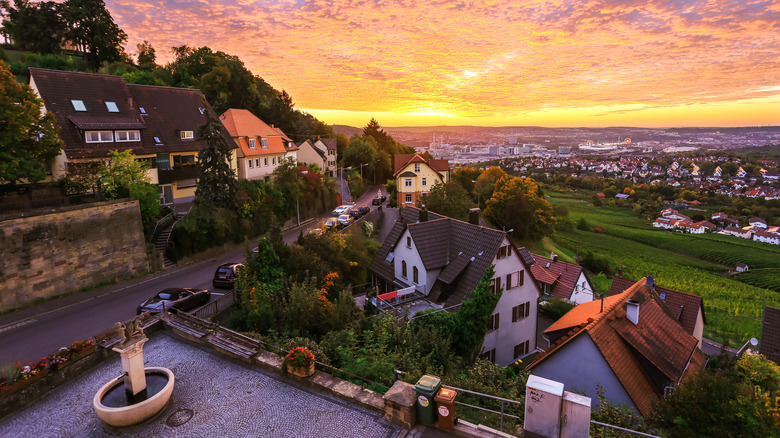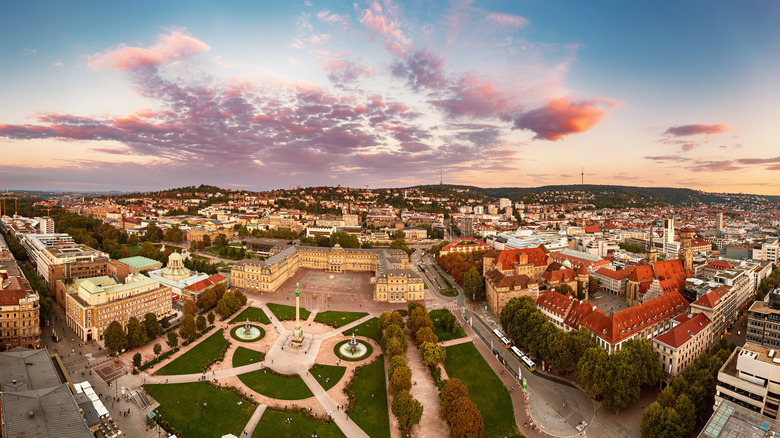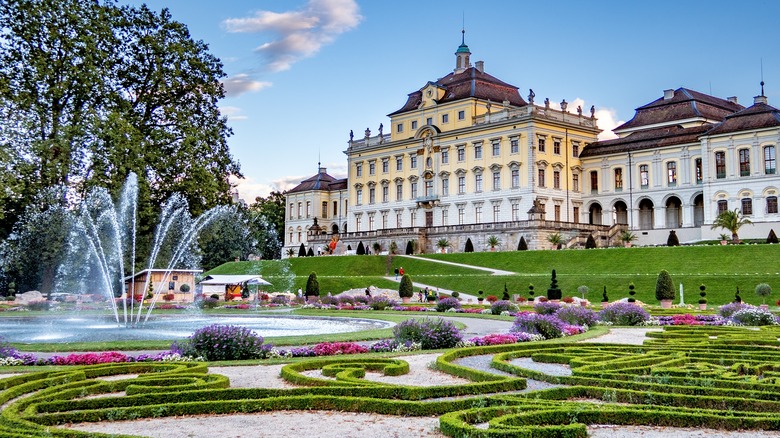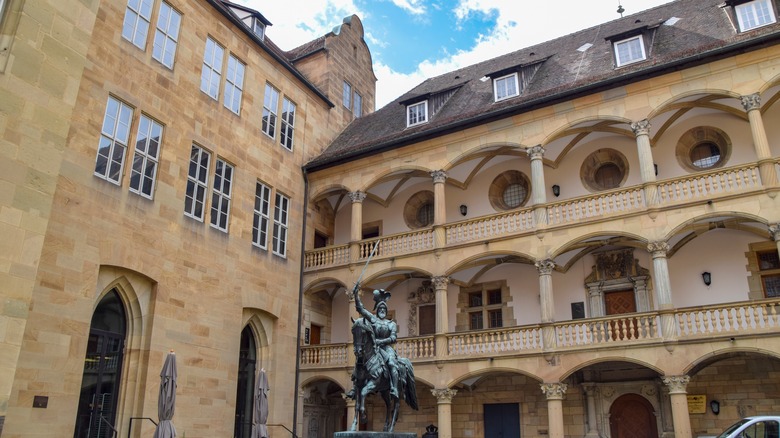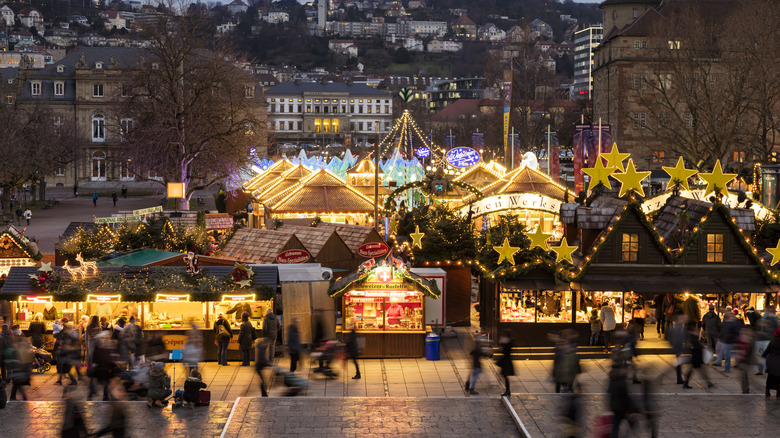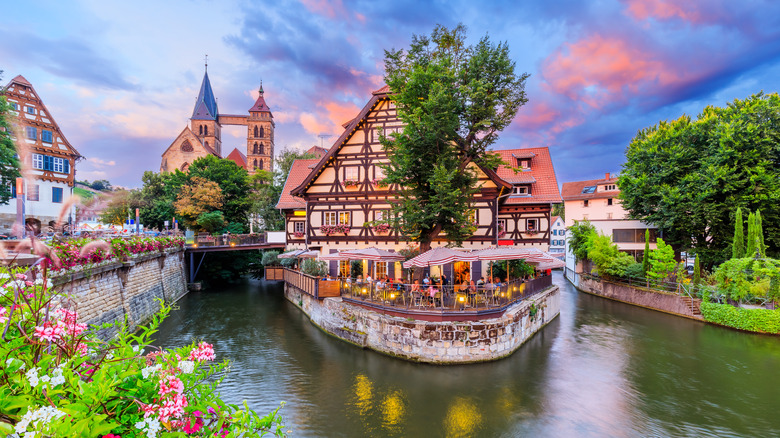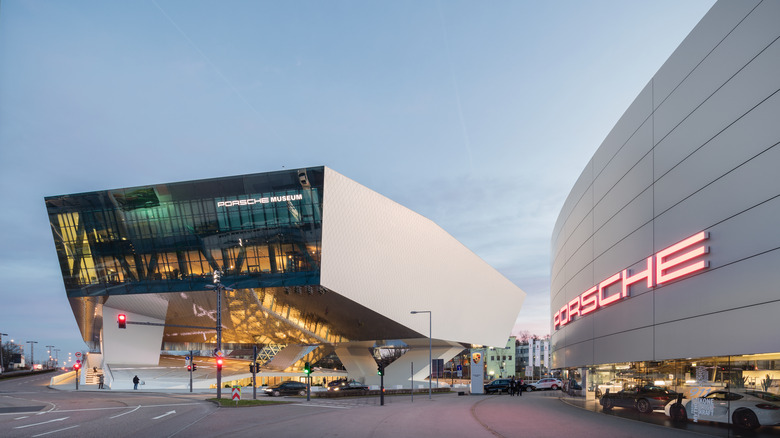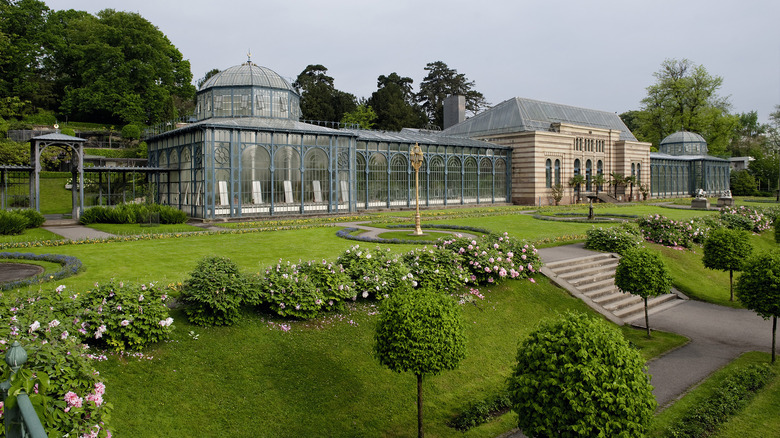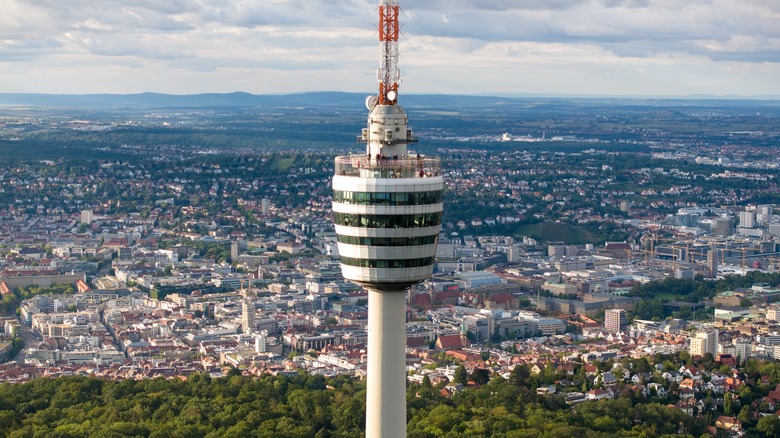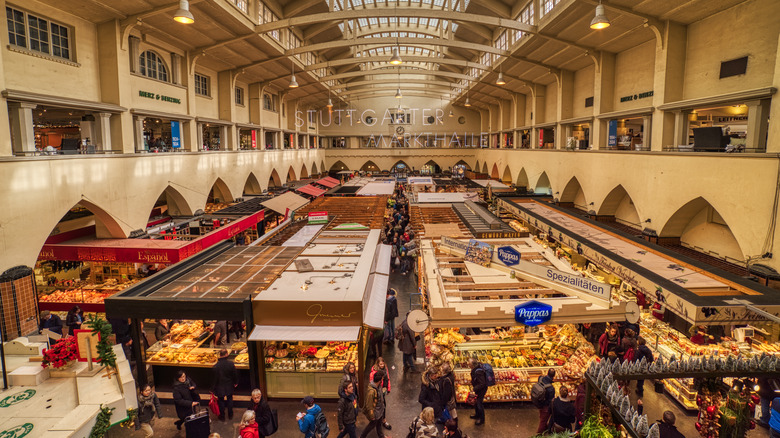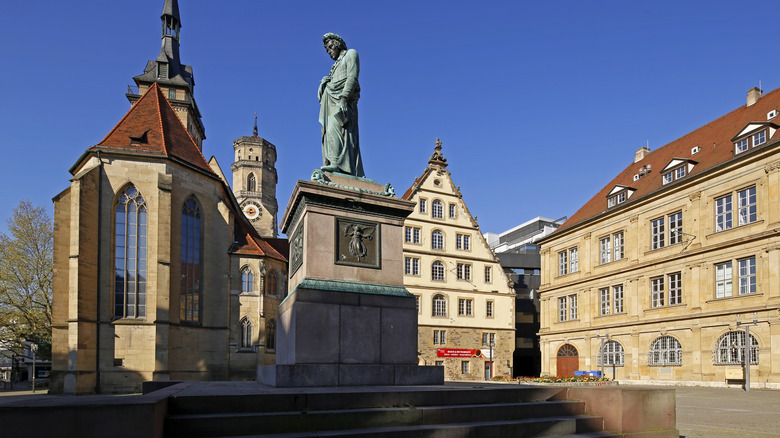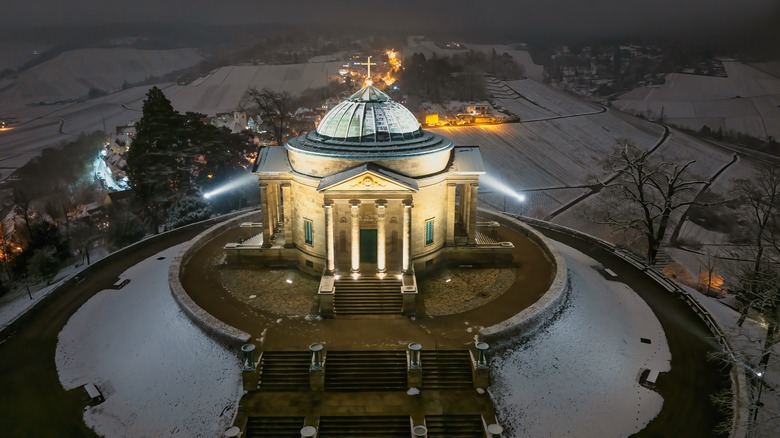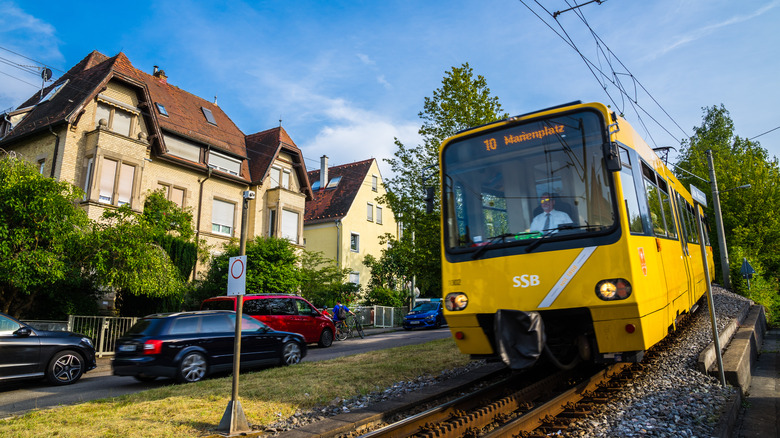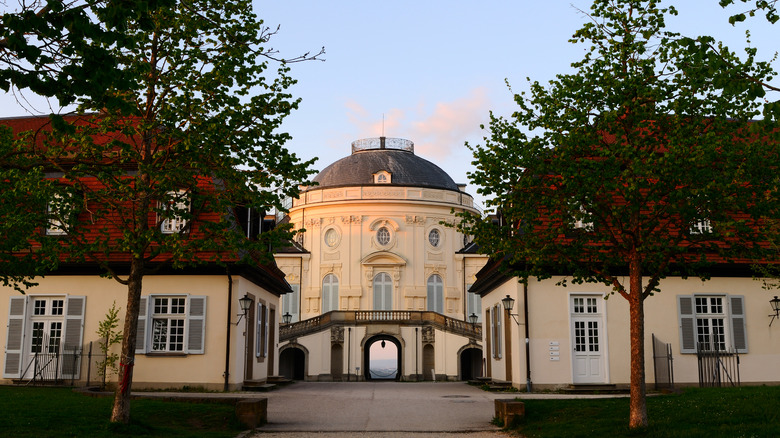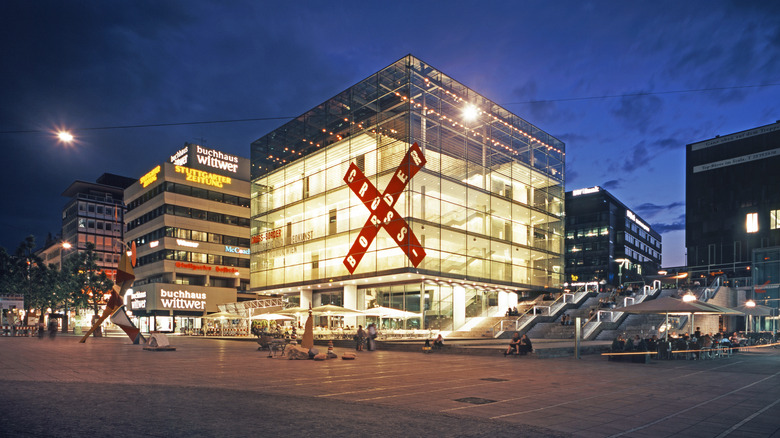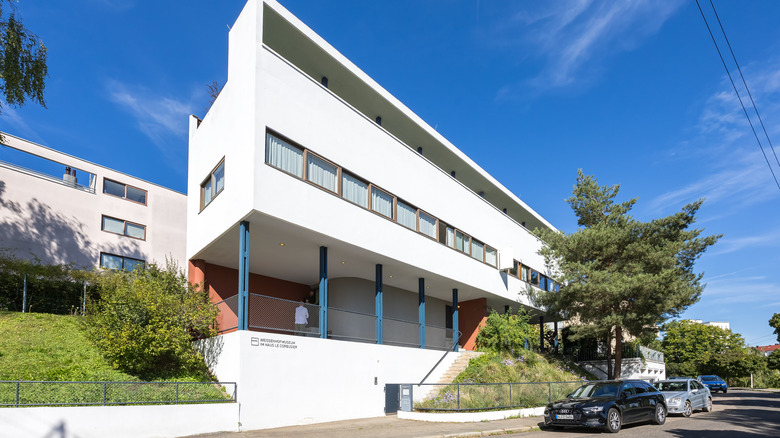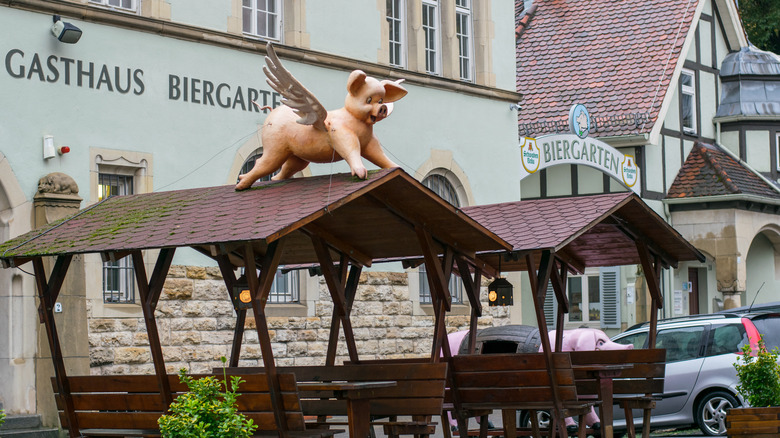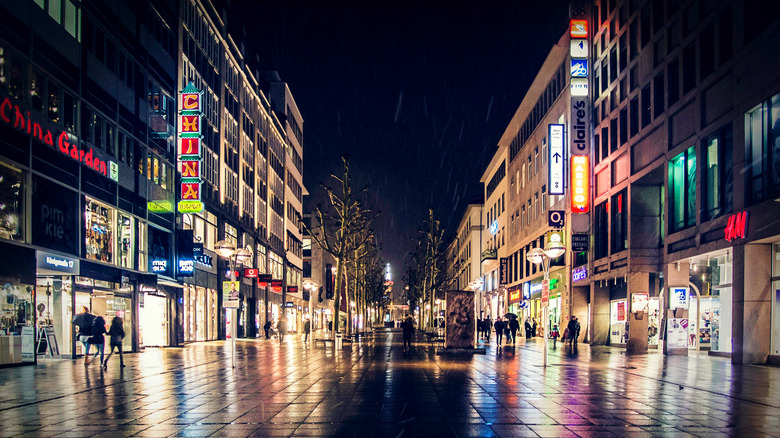16 Attractions In Stuttgart, Germany You Can't Miss On Your First Trip
Stuttgart is the sixth-largest city in Germany, but it got its start as "Stuotgarten" back in the 10th century — a stud farm for breeding military horses. The name essentially stuck, and over time, the capital of Baden-Württemberg in the southwestern part of the country grew into an international center for architecture, wine, and automobiles. It's a great jumping-off point if you plan to tour around the beautiful Black Forest or nearby towns with quaint streets and buildings that date back to the Middle Ages. It also happens to be one of the world's most walkable cities and a haven of culture, food, parks, and art.
Whether you're a luxury car enthusiast on a pilgrimage to see some of Europe's most acclaimed manufacturers, or simply want to experience history and romance along with scenic strolls and great grub, look no further than this central European gem. Below, you'll find 16 fantastic places to add to your itinerary for your first visit to the Stuttgart.
Schlossplatz
Schlossplatz, or Palace Square, is best described as the nucleus of Stuttgart, situated right in the middle of the city. It's a public transportation hub, so it's easy to reach by bus or train. It's where you'll find Neues Schloss Stuttgart, a former palace that's now used for government offices, beautiful water features, monuments, and gardens, perfect for a leisurely stroll as you discover the city.
Sclossplatz is home to the Old Castle, which dates back more than 1,000 years and now comprises part of the Württemberg State Museum. This area is positively brimming with arts, culture, and history, home to the Staatstheater, the Staatsgalerie art museum, the Jubilee Column, and more. In the summer, the gardens in Oberer Schlossgarten, just to the north of Schlossplatz, come alive with flowers. In the winter, the area is transformed into a hub of holiday festivities, with a ferris wheel, a traditional Christmas market, and a skating rink.
Ludwigsburg Palace
About a 30-minute drive north of central Stuttgart is the sprawling Ludwigsburg Residential Palace. It was originally built in the 17th century with Baroque architectural influences and updates in Rococo and Neoclassical styles. As of this writing, the royal apartments are in the middle of a major restoration, so they're closed to the public. But, visitors will delight in many other attractions around the palace, especially if you book a guided tour of the inside.
The palace is home to a number of museums and special exhibits like the Palace Theatre, the Lapidarium — a collection of numerous carved stone sculptures — and the Fashion Museum. And not to forget the little ones, the Kinderreich, or Children's Kingdom, is a fully interactive, kid-friendly museum where costumes, props, and games transport young visitors back in time 300 years. Adult admission to the palace and Kinderreich is €10 per adult, or just over $11.60 USD, and €25 for families, equivalent to $29 USD, at the time of writing. There's also a small admission fee to access the museums.
Württemberg State Museum
When sorting through the best destinations that you can't skip on a trip to Germany, nothing will provide quite as much of a thorough overview of Baden-Württemberg's art, culture, and history than a visit to Stuttgart's Württemberg State Museum. Housed in the Altes Schloss, or Old Castle, right in Schlossplatz, its collection holds more than one million artifacts. The Altes Schloss itself is an architectural treasure with a picturesque courtyard surrounded by mezzanines and an interior that holds awe-inspiring artifacts in photo-worthy spaces. And there's a destination for the kiddos, too, at the Junges Schloss, an interactive children's museum.
The Württemberg State Museum is a must-see for cultural treasures that range from ancient archaeological discoveries, like an Ice Age hand axe, to evidence of the region's socio-political paradigm shift in the early 20th century following World War I. Central Europe is a locus of prehistoric development, from the ancient Celts to relics of medieval royalty and the Roman Empire. The museum also houses an astonishing collection of timepieces and scientific instruments from a range of historical periods, and a collection of around 700 glass objects is among the premier collections of its kind in Europe.
Stuttgart Christmas Market
If you visit central Stuttgart in the month leading up to Christmas, you won't miss the annual Christmas Market that dominates Schlossplatz. This is the kind of market that lays the blueprint for other markets around the world, with a history going back to at least 1692. Along with numerous stalls that are chock full with gifts and treats, enjoy free choral concerts in the Old Palace courtyard, immerse yourself in an organ performance at the iconic "Stiftskirche," and take a spin with the kids on the immanently popular small-scale train that departs regularly from the Children's Fairyland on Schlossplatz.
More than 300 stalls fill the square during the Stuttgart Christmas Market, offering everything from jewelry and home goods to seasonal snacks and toys. The stalls' decor is rather the icing on the cake, as the booths are embellished with lights, snowy landscapes, and a range of holiday scenes. Even more lights make an appearance for Glanzlichter, or the Shining Lights displays, which illuminate giant installations with colorful bulbs.
A day trip to Esslingen
Only about a half-hour drive east of Stuttgart sits the charming and historic town of Esslingen, one of a number of municipalities within easy day trip distance that date back to the Middle Ages. Esslingen is renowned for its amazing half-timbered architecture, of which it boasts more than 200 examples of throughout its picturesque Old Town. These buildings were constructed between the 1200s and the 1500s, and the sheer quantity of surviving structures makes this town stand out among others in the region. In the town's market square, keep an eye out for the stunning Kielmeyer House with its red-painted timbers, which was built in 1582. Old Town is also where you'll find Germany's oldest sparkling wine maker, Kessler, which has been making excellent fizz for nearly 200 years.
A medieval German town wouldn't feel quite complete without a glockenspiel, and you can spot the animated clock on the impressively tiered facade of Altes Rathaus, or the Old Town Hall. This is also a great place to dig into some Maultaschen, a dumpling popular in Swabian cuisine. Try Kleine Traube for locally sourced ingredients, or head to Matti for Maultaschen you can enjoy on the spot or take home to prepare later. Rick Steves also counts Esslingen's winter festivities to be among the most charming and less crowded Christmas markets to seek out in Europe.
Porsche and Mercedes-Benz Museums
Car enthusiasts, rejoice. Germany is home to a wide range of renowned car manufacturers, including Volkswagen, BMW, Opel, and Audi. Stuttgart happens to be the main hub of two luxury car makers you may have heard of: Porsche and Mercedes-Benz. Both offer state-of-the-art museums that highlight the companies' histories and technology. Carl Benz was the first person to develop a gas-powered automobile in 1886, so you're in the right place if you can't get enough of both classic cars and the finest contemporary models.
The Porsche Museum is both a museum and a manufacturing plant, where you can explore some of the most legendary models produced through the years. Or, book a guided tour to the production lines where iconic sports cars are made — namely the 911, 718, and the all-electric Taycan. The Porsche Museum is located about 20 minutes north of central Stuttgart. The Mercedes-Benz Museum is just a bit closer, located on the banks of the Neckar River roughly 15 minutes from the city center. See more than 160 sedans, buses, trucks, race cars, and rarities throughout 12 huge showrooms.
Wilhelma Zoological and Botanical Garden
Combining elaborate 19th-century greenhouses and parkland with animal enclosures and beautiful gardens, the Wilhelma Zoological and Botanical Garden is one-of-a-kind in Germany. It holds the distinction of being one of the most-visited zoos in the country. Located on the northwest edge of Spielplatz Rosensteinpark along the Neckar River, Wilhelma is an ideal place to visit with the whole family.
More than 1,200 animal species are present in the zoo, and over 11,000 animals overall. It's no less impressive on the botanical side of things, with beautiful plantings in sprawling greenhouses featuring more than 8,500 species — mostly tropical and subtropical. You'll find plenty of food and snack options here, too, in a casual, buffet-style setting. Admission varies depending on the time of year, with a day ticket running €16, or roughly $18.58 USD for adults between November and February and €22, or $25.55 USD during the rest of the year.
Fernsehturm Stuttgart
Stuttgart is not alone when it comes to having a soaring telecommunications tower as part of its skyline — think Milan's Branca Tower or the BT Tower in London — but the Fernsehturm Stuttgart can say it's the world's first TV tower. And since it needs to be so tall in order to receive and transmit signals, it just makes sense that the tower doubles as a fantastic place to overlook the city.
At more than 700 feet high, Fernsehturm Stuttgart boasts viewing decks at nearly 500 feet off the ground and dining options that offer 360-degree views of the city and the scenic countryside of the Neckar Valley. There are two places to grab a bite once you're up top: Restaurant Leonhardts and Panoramacafé. Guided 60-minute tours offer a unique look at both the exterior and interior, including the foundation. Alternatively, you can check it out at your own pace.
Stuttgart Market Hall
Stuttgarter Markthalle builds on the legacy of local food markets held here since at least 1304, and probably much earlier. Today, a beautiful building designed more than a century ago is home to 33 stalls selling everything from fresh produce to baked goods to local Swabian meats and sausages. You'll find tea, spices, cheese, honey, wine, eggs, and more alongside international fare from different parts of Europe and Asia.
If a sit-down experience is more your style, the market hall also hosts three restaurants. Marktstüble serves traditional Swabian dishes and is a great spot for happy hour in the beer garden during the summertime. Tapas-Bar specializes in small plates with a Spanish twist, and Empore is a well-established Italian spot located on the upper floor, with views down onto the stalls. Book a guided tour to learn more about the history of Stuttgarter Markthalle, or grab a snack and head to Karlsplatz across the street, where you can take a seat on the steps and crack open your culinary finds.
Schillerplatz and Stiftskirche
Kitty-corner to Stuttgarter Markthalle and right next to the Württemberg State Museum, you'll find Schillerplatz. A cobblestone square surrounded by historic architecture, its centerpiece is a monument to Friedrich Schiller, an acclaimed German poet, playwright, and philosopher. His namesake square is a beautiful place to wander as you explore central Stuttgart, taking in the Alte Kanzlei (Old Chancellery) on one side and the 14th-century Fruchtkasten, or granary, on the other.
Alte Kanzlei is currently a restaurant serving Swabian cuisine, so you can relax at a table in the square or immerse yourself in the contemporary interior. And the Fruchtkaste now operates as a musical instrument exhibition space and performance hall that's part of the Württemberg State Museum. Adjoining these two spots is the Stiftskirche, a church that has existed in some form on this site for more than 1,000 years. One Saturday morning per month, the church offers free guided public tours that run for about 45 minutes and don't require advance registration — donations are always welcome, though. The tower is also open to climb for great views from above.
The Grabkapelle on Württemberg Hill
The Grabkapelle, or Sepulchral Chapel, of Württemberg Hill is located east of central Stuttgart on a hilly, picturesque site overlooking the city. As a burial chapel, it was built as the mausoleum for King Wilhem I's wife Katharina, who died while she was still quite young. The king constructed an elegant chapel that stands as a hilltop monument above a crypt, where the royal couple are laid to rest.
Between March 29 and November 1, the chapel is open to the public Wednesdays through Sundays, then it's open Fridays through Sundays during the month of November. It's closed the rest of the year. Adult admission is just €4, or $4.65 USD per person, and slightly more if you'd like a guided tour. Around the monument, beautiful parkland makes for a lovely place to hike or bike. If you're on two wheels, the Neckar Valley Cycle Path links to Württemberg Hill, and pathways like the Untertürkheim loop boast beautiful views across the countryside.
Take the Cogwheel Train
Cogwheel trains, also known as rack, rack-and-pinion, or cog railways, are often found in mountainous areas where the grades are steep and a special mechanism is needed to keep the train on track, so to speak. One of the world's steepest train rides climbs through mountains and meadows in the Swiss Alps, but it turns out that downtown Stuttgart also finds one useful.
Known locally as the "Zacke," the Stuttgart Cogwheel Train climbs a 17.8% grade, and it's been doing it for well over a century. The unique rail journey holds the distinction of the only rack route that provides regular commuter journeys in Germany. In this case, it also boasts panoramic views. Tickets can be purchased via Stuttgart Transport and Tariff Association (VVS), which is the same way to purchase tickets for S-Bahn, U-Bahn, or buses around the city. "I took the Zacke from Degenloch to Marienplatz and was thrilled," a visitor enthused in a Google review after a visit in summer 2025. "The train is modern and comfortable — particularly practical: it has its own bicycle carriage, which makes it easy to take your bike with you."
Schloss Solitude
Germany is home to dozens of astonishing castles, including Europe's grandest fairytale castle hidden in the Alps that inspired Walt Disney. So it's probably no surprise that Stuttgart is home to more than one. Schloss Solitude, or Solitude Palace, was built by Duke Carl Eugen as a summer home and hunting retreat. Situated just outside of central Stuttgart, it's perfect for an afternoon tour or a stroll through the gardens.
The interior is a confection of Rococo and Neoclassical ornamentation, and you can peep a great view from the cupola viewing platform during a tour. Even the garden was originally a high-maintenance Baroque composition. Today, the parkland is a bit more organic but no less picturesque, making it a perfect place for a relaxing stroll with photo-worthy views of the palace. It's also home to Akademie Schloss Solitude, which offers programs for international emerging artists through a residency program in buildings adjoining the palace.
Kunstmuseum Stuttgart
Stuttgart has a long history as an artistic and cultural center. It's home to the Stuttgart State Academy of Art and Design, plus numerous museums that span the disciplines of art, science, technology, anthropology, history, and more. Arts and culture enthusiasts should carve out enough time for a visit to the Kunstmuseum Stuttgart, which centers around the city's public art collection.
This is a go-to spot for modern and contemporary art, with rotating exhibitions throughout the year and a permanent collection that features 20th-century titans of art history like German artist Otto Dix. The museum also preserves the artist's home at Museum Haus Dix, which is about a two-hour drive south of Stuttgart. Bonus: find great views over central Stuttgart from the floor-to-ceiling windows on the Kunstmuseum's 4th floor.
The Weissenhof Estate
In the early 20th century, Germany was a locus of creative ingenuity. Along with a myriad of artists, designers, and avant-garde creatives, Walter Gropius established the Bauhaus in 1919 in Weimar, one of the most historic destinations in Germany. Another architect, Mies van der Rohe, was the final director of the school before the Nazi regime forced its closure in 1933. Five years earlier, he oversaw the unveiling of a remarkable architecture exhibition right outside of Stuttgart.
Known as the Weissenhof Estate, the complex is an exhibition of modernist design showcasing some of the greatest architectural minds of the 20th century, including Gropius, Le Corbusier, Hans Scharoun, and several others. The 1927 exhibition invited the public to tour the homes, and afterward, the city leased them. Today, a visit to the Weissenhof Museum is a trip back to the burgeoning period of early modernism, where you can visit a residential building co-designed by Le Corbusier and Pierre Jeanneret, now a UNESCO World Heritage Site.
Schweinemuseum
Ready to get piggy with it? Look no further than this unusual museum that's a Stuttgart original — the Pig Museum. The fruit of one woman's very specific collection, the Schweinemuseum would be nothing if it weren't for the unique obsession of Erika Wilhelmer, a local restaurateur and a passionate accumulator of all things swine.
In 1992, the museum entered the Guinness Book of World Records for being the largest pig museum on Earth, home to 25,000 objects — today, it features more than twice as many. Explore more than two-dozen themed rooms, two of which are set aside for special exhibitions, and discover more than you ever thought you'd want to know about the world of pigs.
Methodology
Stuttgart is a beautiful, historic city with much more to do beyond the 16 attractions listed above. To narrow down destinations that are great for a first visit, we consulted tourism boards and credible resources such as MovingtoStuttgart.com, Stuttgart-Tourist.de, Stuttgart.de, and Esslingen-Info.de. We also used official sources for location-specific information, such as special exhibitions, admission fees, and opening hours. Some data and historical context was provided by UNESCO and the National Trust for Historic Preservation. To assess the overall popularity and visitor experiences of our chosen destinations, we relied on trusted review platforms such as Google and TripAdvisor, focusing on the attractions and destinations with the highest number of positive reviews.
